Solar
Solar
Battery Storage
Battery Storage
Battery Storage
EV Charger
EV Charger
EV Charger
Heartbeat
Smart Energy Manager
Heartbeat
About Us
About Us
Learn
Featured Articles
Sizing Up A System
Finance & Rebates
Learn
Now servicing New South Wales, Victoria, Queensland and South Australia
Request PricingWe want you to have all the information you need to choose the right residential solar system for your home. Good quality solar power systems have never been so affordable. This year we will see many more households integrate battery storage into their system to store excess solar power that can then be used in the evening.
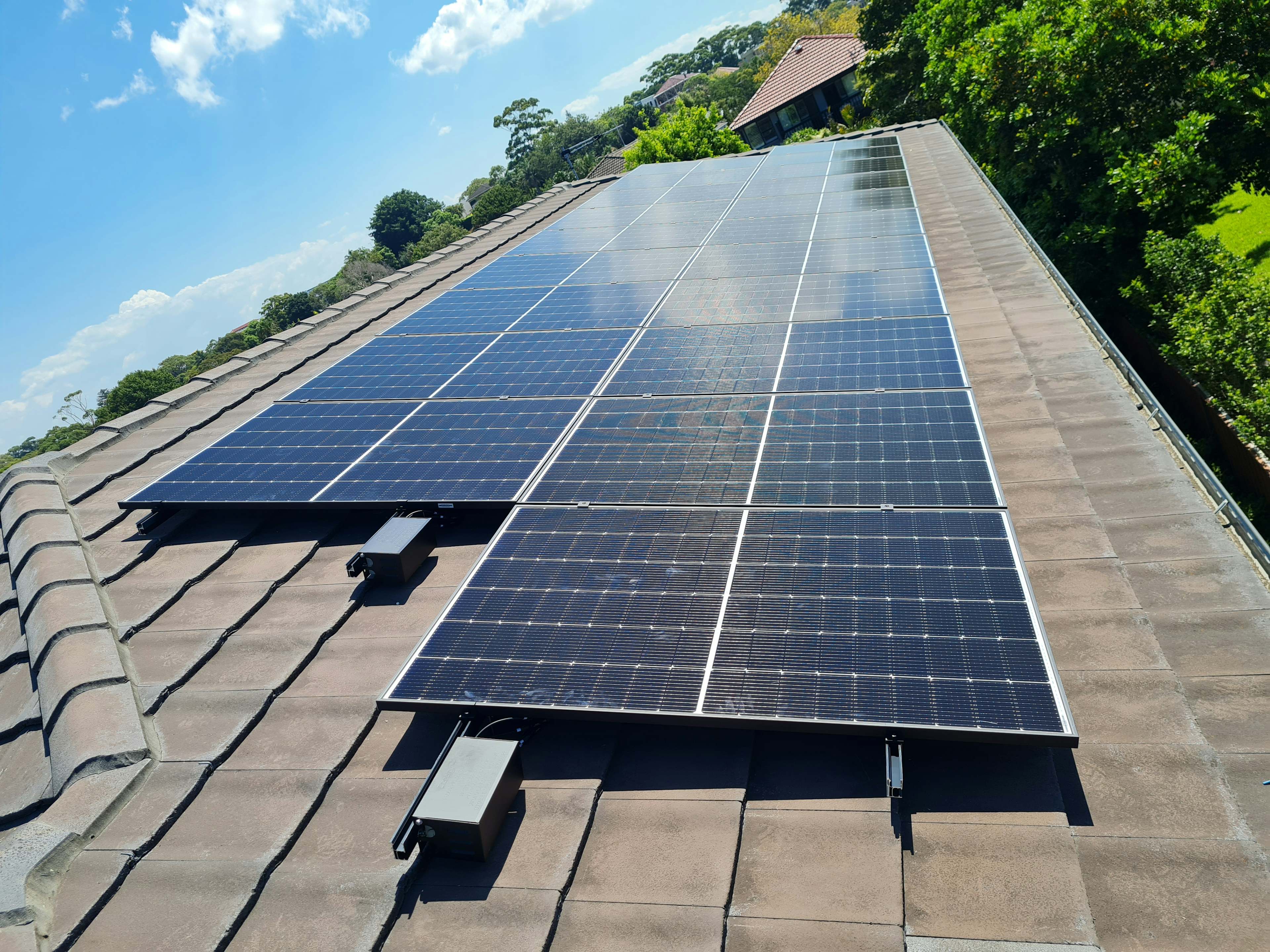
The cost of electricity is skyrocketing, making solar power a no-brainer for nearly all households.
To put it simply, we can help you size up a solar system that generates electricity at around 5-6 cents per kWh (kilowatt hour).
Really… It’s that good.
Because solar power is so cheap, the more solar power you are able to use, the more money you can save.
Good-quality solar power systems have never been so affordable. This year, over 50% of our customers will integrate battery storage into their home solar system to store excess solar power, which can then be used in the evening.
370W-415W residential solar panels are now available. That is a huge improvement from the standard 300W panel we installed only a few years ago.
With great government rebates still available, now is the perfect time to install a home security system.
A top-of-the-range solar system costs around $1,500 to $2,000 per kW. This would include REC Alpha Pure panels with Enphase Microinverters. For example, a 10kW system will be around $15,000.
A mid-range panel with Enphase Microinverters will cost around $1,000 to $1,500 per kW. For example, using Trina panels with Enphase Microinverters will cost around $8,000 to $9,000 for a 6.6kW system.
In some cases, a standard string inverter can also be used, further reducing the price. However, nearly all of our customers choose Enphase because of the 10 significant benefits Smart Solar has over a standard system.
As electricity prices continue to rise, a good-quality solar power system can typically pay for itself in as little as 3 to 5 years. For example, a 10kW system can reduce your power bills by around $3,500 to $4,000 a year. Basically, the larger the system and the more solar power you can use in your home, the greater the benefit to your power bills will be.
Not only is solar power affordable, but it is also significantly cheaper than power from the grid.
This means you can now avoid the cheap end of the market and invest in top-quality solar panels for your home that will perform for decades. More information on solar power pricing is available here.
It’s what we call Smart Solar. Enphase Microinverters convert DC to AC underneath each panel. This means no high-voltage cable runs through the roof or DC isolators, so it’s also a lot safer.
Having one small inverter underneath each panel means the panels are independent of the rest of the array. This increases output in partial shade, it allows us to use multiple roof sections, and it allows you to take advantage of positive power tolerance.


Smart Solar Systems from Enphase now come with a sophisticated monitoring system. This system connects to the Internet to provide real-time performance data, status reports, and automated alerts if one of the panels is underperforming.
Consumption monitoring is also available to help you monitor how much power you use in your home. Previously, system owners had to keep an eye on system performance manually, or they would book regular service calls.
We can now monitor your system in real-time, and Enphase can even remotely reset firmware if one of the panels has an issue. This next generation of solar technology ensures little to no downtime.
Safety is also a key issue. Gone are the days of high-voltage cables running through the house. Smart Solar Technology allows us to run a safe and easy AC cable directly into your meter board from the panel array, significantly reducing electrocution and fire risks.
A solar system produces clean energy from the sun to help you save money on your power bill and reduce your carbon footprint.
Solar power feeds into your home to power everything that connects to mains power. By using solar power in the home, you are directly reducing your power bill, as you are not buying electricity from the grid. As power becomes more expensive, this is becoming increasingly important.
It automatically feeds to the grid if you don’t use the solar power it generates. You may earn a feed-in tariff from your energy retailer. This is generally around 5 to 10 cents and appears as a credit on your power bill.
If you use more power than the solar system generates, you will automatically buy power from the grid at your contracted rates.
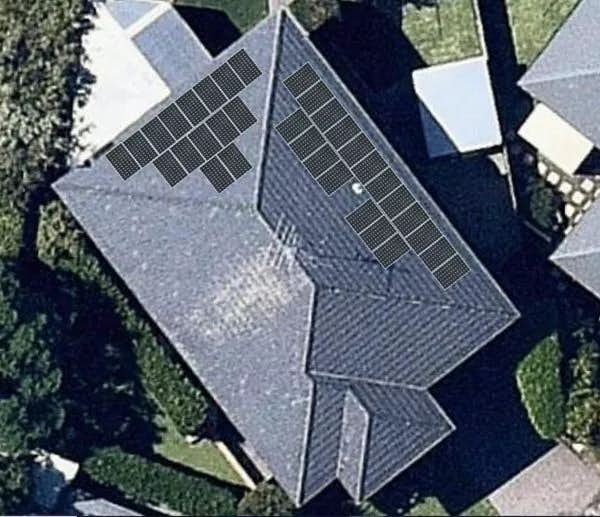
To get the most benefit from solar power, you should use most or all of it when it is generated. To do this requires some analysis of your current and future usage patterns and, preferably, some knowledge about how solar power works.
The 1KOMMA5° team has access to detailed aerial photos on the computer to help accurately measure how many solar panels will fit in your home. A site visit may also be necessary to confirm the measurements.
We can help you clarify your roof’s orientation and any shading issues.
If your roof is suitable for solar power, we can help you size up a solar array, recommend brands, and select the type of system best suited to your house. Ultimately, we provide a firm price for the installation and schedule you for an installation date.
This is usually done over the phone to save you the hassle of a site inspection. However, if we need to come and see you, we will do so free of charge.
Rebates are available to qualifying residential and commercial premises in Australia that install Solar Panels and other Renewable Energy Systems. The Federal Government’s scheme is called an incentive rather than a rebate.
This incentive can mean significant reductions in the cost of Solar Systems. The intent is to encourage Australia’s use of renewable energy. The incentive program, which is part of Australia’s Renewable Energy Target, means that when you install a Solar System, a number of Renewable Energy Certificates are created. These Certificates (STCs or Small-scale Technology Certificates) are then purchased by Energy Companies as part of their Renewable Energy commitments.
The value of these Certificates can vary. They can either be deducted from the price of your system or bought via the Clean Energy Regulator’s certificate Clearing House system. Several additional incentives and grants are available for commercial systems. One of our commercial consultants would be happy to discuss these with you.
On top of this, the Victorian State government has a solar rebate program in place. There are several important points to note with this rebate, so please follow the links to more information below:
Solar Power Rebates in Victoria
A solar system does not only work at maximum capacity. In low light conditions, such as early in the morning or when it is overcast, solar panels will still convert light into power for your home. This will be at a reduced rate.
For example, an 8kW system may only output 5kW of power on a cloudy day. At some point, the energy produced is no longer strong enough to power the inverter, and the system will turn off. This happens every evening and perhaps during an especially dark storm.
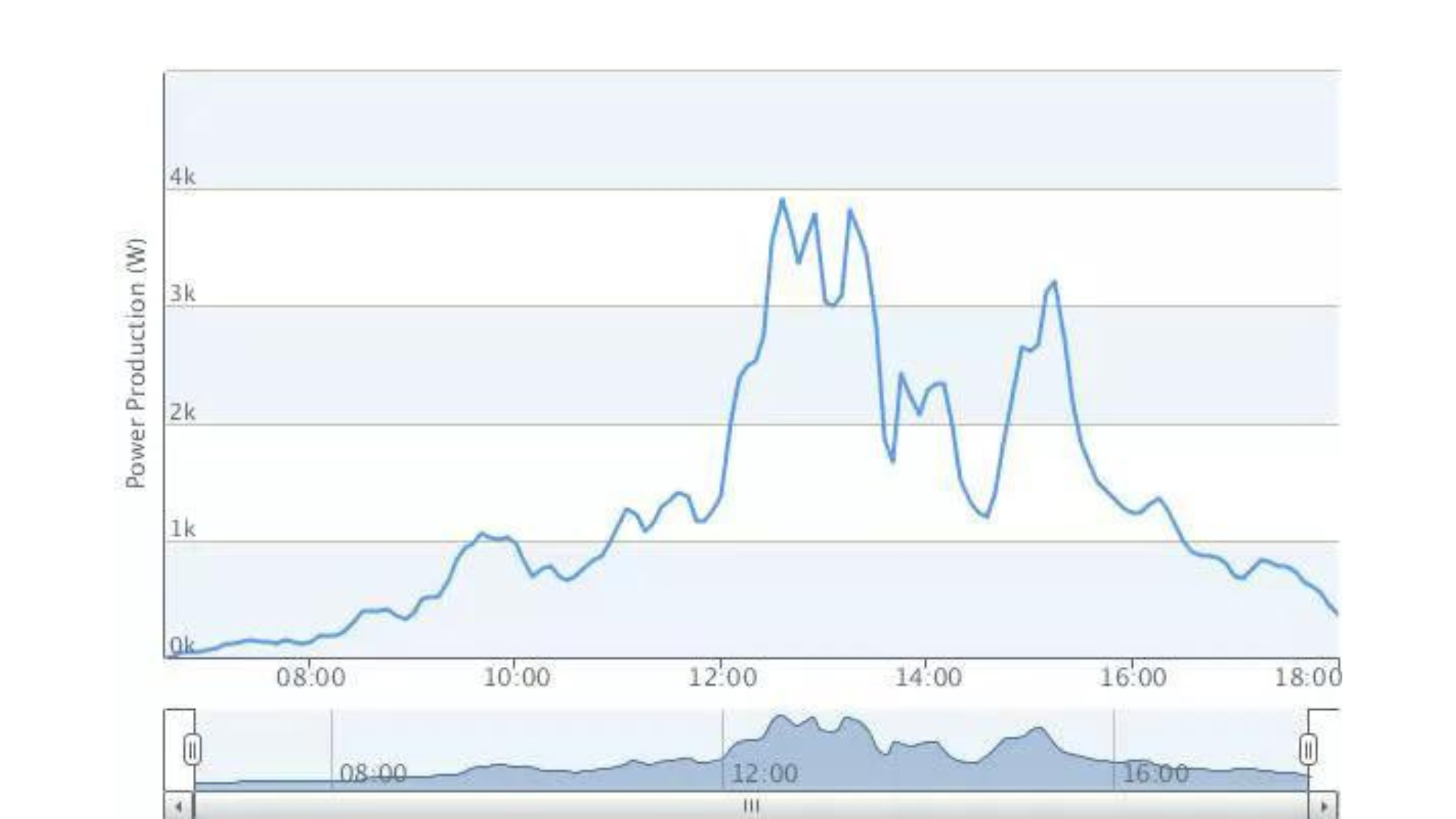
Here is an example of one of our high-performing Enphase Micro Inverter systems on an overcast day. As you can see, output can change minute by minute as the sun comes out and disappears again behind the clouds. This system is orientated west of north; hence, the peak solar output occurs from late morning through to around 4 p.m. in the afternoon. This is an early spring day (September), so the peak output period will increase in length over the summer and be a little shorter in winter.
This is a unit for measuring energy, and it is how your energy retailer bills you.
A kWh is one kilowatt of power measured or used over an hour. For example, if you have an air conditioner that uses 3kW of power, it will use 3kWh of power every hour, so if you are billed 25 cents per kWh by your energy retail, it will cost you 75 cents every hour to run the air conditioner.
Similarly, an 8kW solar system will generate 8kWh of power for every hour, and it will output power at full capacity. If on a sunny day in summer, a 10kW works at full capacity for 4 hours, and you use all of this power in the home, you will save $10.00 on your power bill (10kW x 4 hours x 25 cents).
Find out more about solar power measurements.
This depends on several factors, including where you live, your roof orientation, the angle of the panels, the weather, the seasons, and the size of your system. Because of this, we only use averages and guidelines from the Clean Energy Council.
The Clean Energy Council advises that in Sydney, a solar system should, on average, output 3.9 kWh of energy per day for every kW of solar installed, taking into account the seasons and the weather. On any given day, this figure could be extremely different. In Melbourne, a solar system will output 3.6kWh per day per kW of solar installed.
For example, a 2kW system should output 7.8kWh on an average day, and a 10kW system will output 39kWh per day.
Using this figure, a simple yet effective way to estimate the output of a solar system is to multiply the system size by 4. For example, a 2kW system will generate approximately 8kWh of power on an average day. Importantly, a solar system will output a lot more power in summer compared to winter. This normally works well with a home in Australia due to our hot summers.
Our customers typically use more electricity in summer because they use the air conditioner and pool pumps and because many people are home from work during the Summer Holidays.
As with most products, our experience is that higher quality products such as REC Solar Panels will often achieve results above the expected averages. Here are the average daily output figures for a 5kW solar system in Sydney:
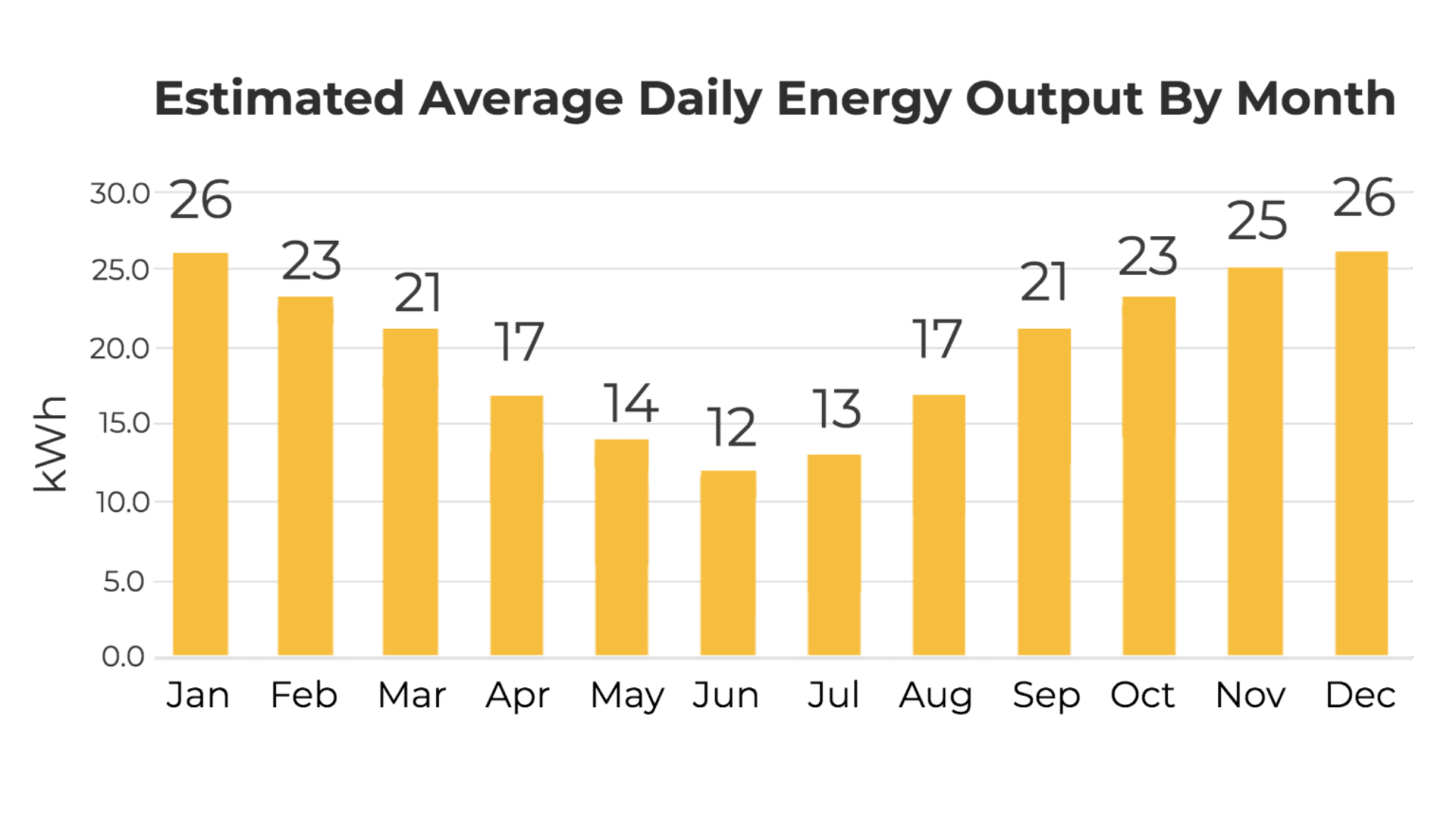
The right-sized solar system depends on what you want your system to do. For many people, it is about making sure the solar system pays for itself in as little time as possible. For others, it is to reduce their power bill by the greatest amount or to reduce their carbon footprint and do their bit for the environment.
Paying back your investment as quickly as possible requires sizing up a system to match your daytime energy usage. In a perfect situation, you would use all of the solar power that it generates and have the solar panels facing north or (northwest to maximise your savings during the peak time of use billing period. See below for more info).
For example, if you install a 5kW system for $6,000, it generates about 7000kWh a year. So, if you pay an average of 30 cents a kW for your electricity, you would save about $2,100 every year. This would result in a return on your investment in under 3 years!
In reality, it is difficult to use 100% of the power a solar system generates, however, if the system is sized correctly you should be able to get close to 70% or higher.
You can now also store excess solar power in a solar battery to use at night. This makes it much easier to maximise the benefits of your solar system.
Minimising your power bill is easy. Simply buy the largest solar system you can afford and/or fit on your roof. As we mention above, there is a good fit for everyone but there is no harm in getting a system that is a little bigger. This can allow for future increases in power usage if you are planning on buying an Electric Vehicle, pool, spa, air conditioner or some other large user of power. Of course, don’t forget the kids! For some reason, teenagers seem to find it difficult to shower without the heat lamps on, and then there is the hairdryer…
The reason returns diminish when you have an oversized solar system is that instead of saving money from your bill by using solar power rather than buying power from the grid (e.g. contracted rate of 25 cents per kW), you are selling solar power to the grid at your contracted feed-in tariff rate. Because of this, we now have many customers with a power bill of well under $100 a quarter:
“I am pleased to say that the system has worked flawlessly since commissioning and has exceeded my expectations.
Our last monthly bill was $10.53 – the same bill in previous years was $198.79 and $163.67.”
If you have an environmental motivation, your roof space and budget are all that are stopping you!
The bigger the solar system, the better, as you are reducing your reliance on polluting industries such as coal and gas and helping to produce clean, renewable energy. Buying a solar system is one of the most significant steps you can take as an individual and a household to help build the renewable energy sector and reduce our reliance on old and polluting technology. There are now millions of solar systems in Australia. As this number continues to grow, our voice becomes louder. Governments are starting to listen!
More info is available here: How To Size Up A Solar Power System
Solar panels facing north generate the most energy over the course of a year. This is especially important in winter when the sun is lower in the northern sky.
A 1KOMMA5° consultant can visit your home and use specially designed software to demonstrate the sun and/or shade that your particular roof will have in winter, summer and at any time during the year.
If your house has a north-south roofline, we can install panels on either the eastern or western roof, depending on what time of the day you use the most power. Many households use more power in the afternoon when the kids are home from school, and the air conditioner and pool pump are running. If this is the case, we will install your solar panels on the western roof.
The other point that can influence this decision is time-of-use billing in the Ausgrid distribution area.
Please see the question about your new digital meter below for more information.
It is important to understand that panels installed on a roof facing south of either east or west will generate less power than a solar system facing north. They may not even turn on during winter. In most cases, we would advise against using any south-facing roof unless it has a very shallow tilt of fewer than 10 degrees.
Yes, all solar systems require the replacement of your meter with a new digital meter. These bi-directional meters can monitor how much excess solar power you send to the grid as well as how much power you buy from your energy retailer.
If you have a digital meter, you will still need to get it replaced, as it will not have the correct programming. Unless you or your builder specifically installed a digital meter that can measure solar energy. This is rare for houses that have not had a recent renovation.
Your energy retailer is now responsible for all meter replacements. Should you prefer, 1KOMMA5° has an arrangement with Energy Locals where we can replace your meter at no cost to you. The Energy Locals plan includes a solar feed-in tariff of up to 10 cents per kWh, competitive electricity prices, carbon offsets for all your energy use, and no exit fees or lock-in contracts.
Please contact the 1KOMMA5° Sydney and Melbourne Team for more information and for the terms and conditions.
Our solar experts will help you find the right system for your home.

Get all the right information before installing a solar power system for your home.

Your new energy tariffs will then depend on which energy distribution area your house is in.
If you are in the Endeavour Energy distribution area, your regulated energy tariffs should not change when you install solar.
In the Ausgrid distribution area, having a new digital meter typically results in you paying time-of-use billing. This is a great opportunity to reduce your energy bill further but you will need to manage your power usage to ensure you maximise the potential benefits.
Energy prices in the shoulder and off-peak periods are much cheaper than a flat-rate tariff. The peak billing period is between 2 pm and 8 pm on weekdays only, which means you will pay less for your power 82% of the time.
According to Ausgrid, an average Sydney household only uses 22% of its power during the peak period, when power prices are approximately 50 cents per kWh.
If you have a roof facing north and west, you can take advantage of time-of-use pricing to further minimise the amount of power you use during the peak period by running your home on solar power. This results in free solar power during the afternoon and low tariffs in the morning until 2 pm and after 8 pm. Please note that the actual tariffs you will pay depend on which retailer you are with and the available packages. If you have any questions about this, please call us today on 1800 057 805.
Now is the best time to buy a solar power system in Australia due to generous government rebates and the record-low price of solar panels. Also, power prices are rising. That means that you are missing out on thousands of dollars in savings every year you put off going solar.
It is important to remember that no matter how efficient panels become in the future, a 10kW solar system is always going to output the same amount of power, irrespective of how efficient the panels are.
A common mistake people make is to equate a panel’s efficiency with the system’s output. A 10kW system with high-efficiency 410W panels produces exactly the same power as a 10kW system with low-efficiency 300W panels, it just does so using fewer panels. Unless you have a restriction of a small roof or you are looking to install a commercial-size solar system (over 30kWs or so), efficiency is largely irrelevant.
You would be much better off buying a system with today’s 410W panels compared to waiting 5 years to buy a system with 500W panels. This is because by installing solar power today, you can start saving money immediately.
Solar power prices have been dropping for many years. However, we are approaching a limit to this price drop due to the fixed costs of installing a system, such as the installation, cabling and mounting kit. The biggest change we are seeing in solar panels is efficiency, not price drops.
Why wait to have a 17-panel system giving you the same output as a 20-panel system?
Very little, if anything at all. Solar panels are passive. However, they can collect dust, bird poo and other particles that will build up over time. Luckily, the rain will normally wash all of this off.
If there is a period of many months without rain, by all means, safely wash your solar panels by spraying them with a hose, but we don’t recommend that you go up onto your roof and wash them by hand. It is not worth your time and can be dangerous. We advise you to do it while standing safely on the ground.
If you get up onto your roof to clean the gutters, spraying your panels could be a good idea if you are able to do it safely.
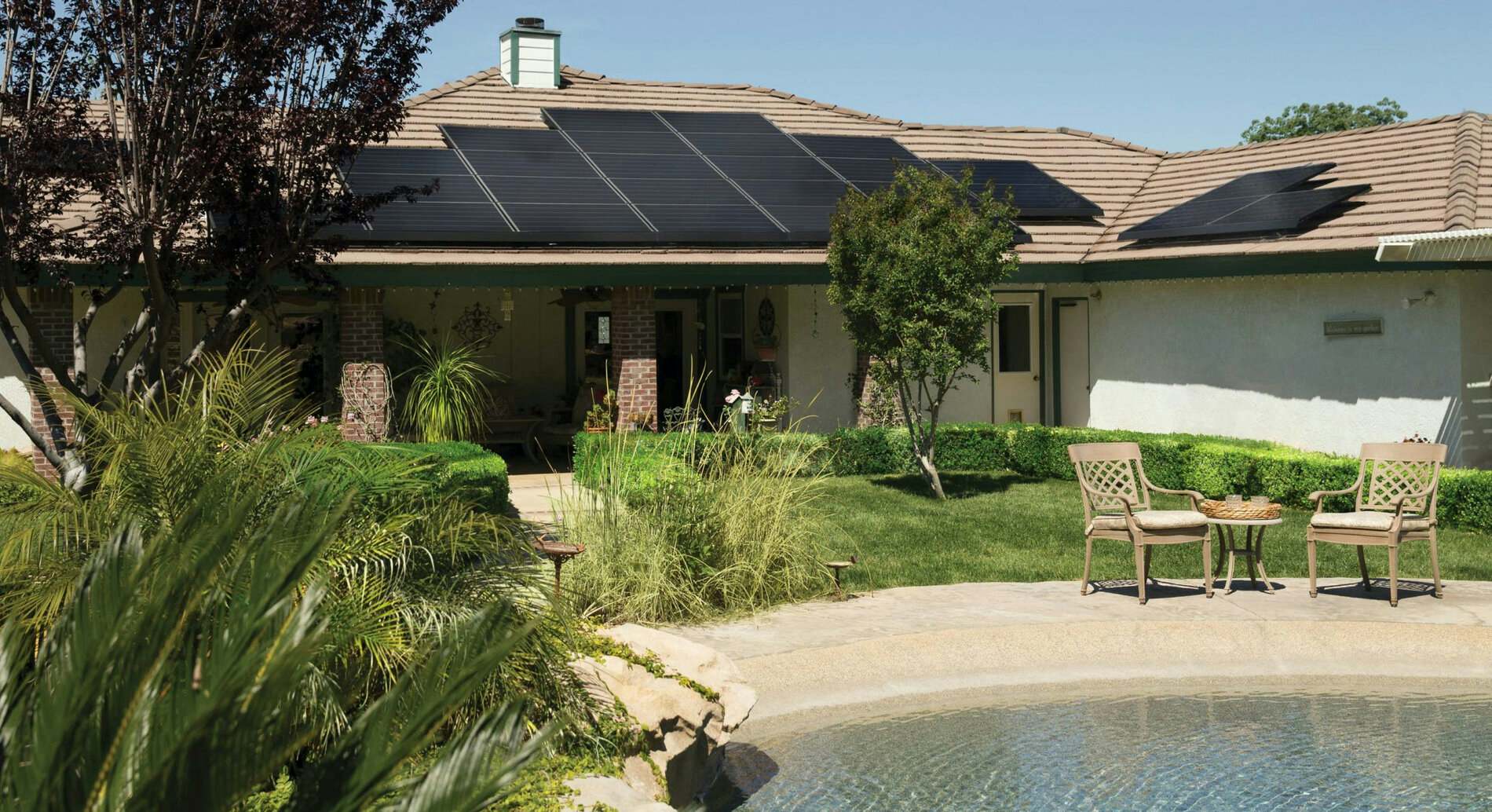
Nearly all 1KOMMA5° systems are now what we call smart solar systems, where the inverter connects to the internet. This provides panel-level monitoring and system status alerts to our service team so you will know if something is wrong with one of the panels without needing to conduct a regular service check. We have heard of companies charging yearly service fees to maintain a solar system, but this would only be required with older solar technology.
Yes, we offer several great options, depending on your comfort level, including a low-interest payment plan from Brighte.
Households across Australia face rising energy costs, while solar power has never been so affordable. Installing solar panels can reduce or even eliminate your power bills, plus they can supply your home with clean, renewable energy for decades.
However, as the average system size continues to increase and more than half of installations now include battery storage, many people are now choosing to finance some or all of the system. Larger systems cost more money, but they can also save you many thousands of dollars year after year, making it an attractive and safe investment.
Thanks to the current low interest rates, it’s common for the monthly loan repayments to be less than the benefit of the system, often significantly, especially if you spread the payments out over a number of years.
With a Green Loan, your repayments can often be less than your solar savings, leaving you better off from day one!
Designed to make environmentally-friendly investments easier, these loans are low-interest, flexible, and quicker to apply for than your usual bank loan, and they are able to be managed online. Green Loans from RateSetter can be used to finance solar power systems and battery storage up to $45,000, to be repaid across 3-7 years.
If you are looking to pay for your system in full, we require a deposit (usually 10% on a standard system) and the balance on or before the day of installation of the panels and the inverter.
For safety reasons, your solar system switches off in a blackout. It should automatically turn on again once the power is restored. If it doesn’t, visit our Service Centre page for troubleshooting tips on resetting your system. If 1KOMMA5° Sydney and Melbourne (formerly Solaray Energy) installed your system, and the issue persists, you can submit a Support Ticket request from there. We can help you switch your system on again or book a service check for you to make sure everything is ok.
If another installer has installed your system, we suggest you reach out to them or the inverter manufacturer.
If you would like to power your home in a blackout you will need a solar battery with backup protection such as the Tesla Powerwall. We can connect a few circuits to the battery to power essentials for when the grid goes down. This includes items such as a fridge, freezers, fish tanks, TV, internet etc. In the morning, the battery will recharge from any excess solar power that is not used in the home as it is generated.
More information is available here: Price of Solar Storage
For most households that already connect to the grid, the additional battery capacity needed to go completely off-grid is too expensive to make it worthwhile.
Disconnecting from the power grid would mean installing both a daily-cycle battery and a backup weekly-cycle battery, with enough capacity to last up to a week or so during the middle of winter when it rains for seven days straight.
It is much cheaper and more reliable to use the grid as a backup rather than buying a backup battery bank for tens of thousands of dollars.
While complete off-grid living might not be feasible for everyone, grid-connected solar power systems with battery storage offer a fantastic middle ground. These systems allow you to maximise solar self-consumption, minimise reliance on the grid, and still have backup power during outages.
However, choosing the right battery for your needs is crucial to optimise your system's performance and cost-effectiveness. Explore solar batteries using our detailed guide, which will equip you with the information you need to make an informed decision.
The main limitation is that we are only able to install up to a total of 5kWs in one phase. If you have 3-phase power, you can install whatever you like.
The other issue we often face with older solar systems is that Australian Standards have significantly improved in recent years. This means that if we touch your existing system, we need to replace all of the cables.

We typically recommend that you install a new Enphase system alongside your existing system. We then connect the two systems to your meter board.
More information is available here: Adding solar panels to your existing solar system
Not always. A three-phase inverter directs power across all 3 phases evenly. However, you can also have a single-phase inverter and not adversely affect the benefit of your solar system because the digital meter will usually reconcile the power across all three phases in 15-minute increments. Whether or not you need a 3 3-phase inverter really depends on the size of your system, your load and your usage profile. So please contact our solar experts so that we can assess what you have in your home and then provide you with the right information.
There are many factors to consider when considering the size of your solar system. Learn how to do it from the experts.
Simply request a quote, and a member of the 1KOMMA5° Team will contact you. We can give you all the information you need in around 10 minutes.